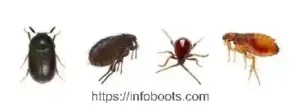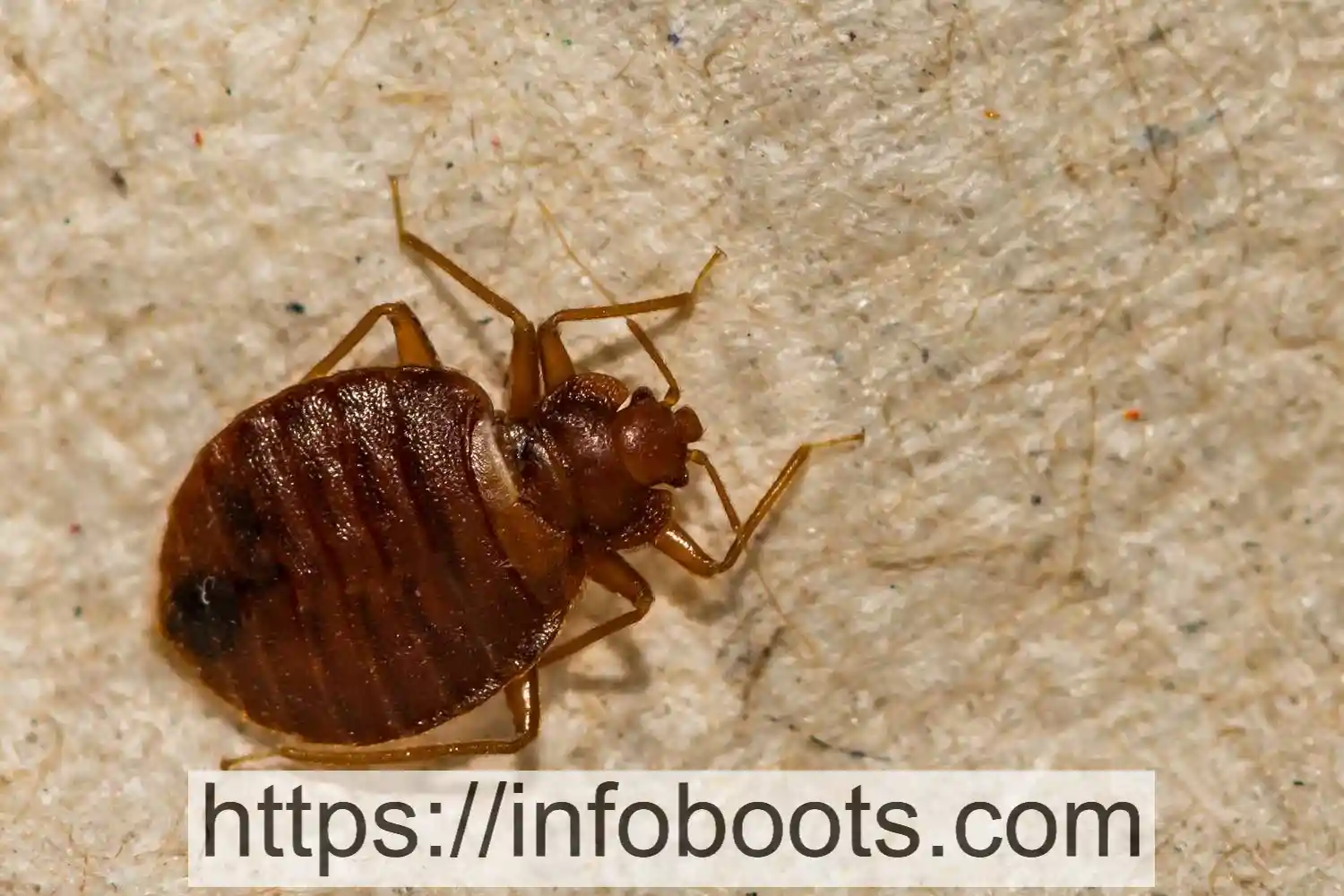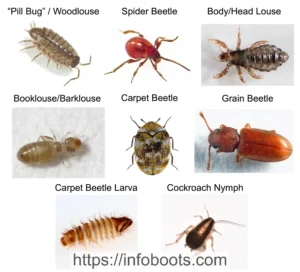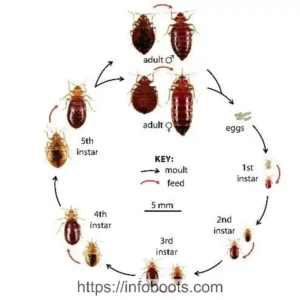Many bugs look like bed bugs. This makes it hard to identify them correctly. Bed bugs share common traits with other insects, such as size, color, and shape. They are small, reddish-brown, and oval. Many people confuse other bugs with bed bugs because of these similarities.
Accurate identification is very important. Misidentifying bugs can lead to using the wrong pest control methods. This wastes time and money. Worse, it might not solve the problem. Knowing how to tell these bugs apart can save effort and ensure effective treatment.
What Do Bed Bugs Look Like?
Physical Description of Bed Bugs
Bed bugs are small insects, about the size of an apple seed. Here are their main features:
| Feature | Description |
|---|---|
| Size | 4–5 mm (about 1/8 inch) |
| Color | Reddish-brown |
| Shape | Flat and oval-shaped |
Habits and Behavior of Bed Bugs
Bed bugs feed on blood, mostly at night. They hide during the day in cracks, mattresses, or furniture. Their bites cause itchy red welts. They don’t jump or fly but move quickly across surfaces.
Bugs That Look Like Bed Bugs
Many insects are often confused with bed bugs. These include:
- Bat bugs
- Carpet beetles
- Spider beetles
- Booklice (psocids)
- Fleas
- Cockroach nymphs
Each of these bugs has unique traits that set them apart from bed bugs.

Bugs Similar to Bed Bugs
Bat Bugs
Bat bugs are closely related to bed bugs. They are almost identical in appearance but feed on bats instead of humans.
How to Differentiate Bat Bugs from Bed Bugs
| Trait | Bed Bugs | Bat Bugs |
|---|---|---|
| Feeding Habit | Feed on humans | Feed on bats |
| Hair on Body | Finer hair | Longer, thicker hair |
Where Bat Bugs Are Commonly Found
Bat bugs are found in areas where bats live, such as attics or chimneys. If bats leave, bat bugs might move into living spaces to find new hosts.
Carpet Beetles
Carpet beetles are another common bed bug lookalike.
Differences in Appearance and Behavior
| Feature | Carpet Beetles | Bed Bugs |
|---|---|---|
| Size | 1–4 mm | 4–5 mm |
| Color | Black, brown, or mottled | Reddish-brown |
| Feeding Habit | Feed on fabric and food | Feed on blood |
Signs of Carpet Beetle Infestations
- Holes in fabrics, carpets, or clothing
- Shedding of tiny larvae skins
- Sightings of beetles on windows or floors
Spider Beetles
Spider beetles look like tiny spiders because of their round bodies and long legs.
How Spider Beetles Resemble Bed Bugs
- Similar reddish-brown color
- Round body shape
Where Spider Beetles Are Typically Found
Spider beetles are found in dark places like pantries or cupboards. They feed on stored food, not blood.
Booklice (Psocids)
Booklice are tiny, pale insects often mistaken for baby bed bugs.
Why Booklice Are Often Mistaken for Bed Bugs
Booklice are similar in size to bed bug nymphs. However, they do not bite or feed on blood.
Areas Where Booklice Thrive
Booklice live in damp, moldy areas like bathrooms, basements, or kitchens.
Fleas
Fleas are another common bug mistaken for bed bugs. Both cause itchy bites, but they are different.
Flea vs. Bed Bug Bites: Key Differences
| Feature | Flea Bites | Bed Bug Bites |
|---|---|---|
| Bite Location | Around ankles | Any exposed skin |
| Bite Pattern | Random | Clustered or in a line |
Characteristics of Fleas
Fleas are tiny, dark brown, and jump long distances. They live on pets like dogs and cats.
Cockroach Nymphs
Cockroach nymphs are young cockroaches that resemble bed bugs in size and color.
How Cockroach Nymphs Resemble Bed Bugs
- Small size
- Brownish color
Behavioral Differences
Cockroach nymphs are faster than bed bugs and are usually found in kitchens or bathrooms.
Bugs Mistaken for Bed Bugs in the Home
Certain bugs are often confused with bed bugs because of similar habitats and behaviors. For example:
| Bug | Common Habitats | Behaviors |
|---|---|---|
| Bat Bugs | Attics, chimneys | Live near bats |
| Carpet Beetles | Closets, carpets | Feed on fabrics |
| Spider Beetles | Pantries, dark areas | Feed on stored food |
Understanding these habits helps identify the correct pest.
How to Properly Identify Bugs That Look Like Bed Bugs
Accurate identification requires careful observation.
Tips for Distinguishing Bugs
- Examine the Shape and Color
Use a magnifying glass to look at details. - Check the Behavior
Observe movement and feeding habits. - Inspect Habitats
Look for the bug in its common hiding places.
Tools and Techniques for Identifying Bugs That Look Like Bed Bugs
- Sticky Traps: Catch bugs for closer inspection.
- UV Light: Highlight bugs in dark areas.
- Professional Help: Call experts for accurate identification.
Why Identifying the Right Bug Matters
Correct identification is crucial for solving infestations effectively.
Avoiding Unnecessary Treatments
Using the wrong treatment wastes time and money. For example, treating for bed bugs when you have carpet beetles will not solve the issue.
Ensuring Effective Pest Control Measures
Knowing the correct pest ensures targeted solutions. This reduces reinfestations and makes treatments more efficient.
Preventing Infestations of Bed Bugs and Similar Bugs
Best Practices for Keeping Your Home Pest-Free
- Clean Regularly: Vacuum carpets and wash bedding often.
- Seal Cracks: Block entry points for bugs.
- Reduce Clutter: Minimize hiding spots for pests.
How to Prevent Bed Bug-Like Infestations
| Action | Purpose |
|---|---|
| Inspect Secondhand Furniture | Avoid bringing bugs home. |
| Use Mattress Covers | Protect against bed bugs |
| Maintain Dry Areas | Discourage booklice |
When to Call a Pest Control Professional
Sometimes, expert help is necessary.
Signs That You Might Need Expert Help
- Persistent bites or signs of infestation
- Bugs that are hard to identify
- Large infestations requiring treatment
Importance of Professional Identification
Professionals have tools and knowledge to identify bugs accurately. This ensures proper and effective solutions.
FAQs
- What bugs look most like bed bugs?
Bat bugs, carpet beetles, spider beetles, booklice, fleas, and cockroach nymphs. - How can I tell if I have bed bugs or something else?
Look for key traits like feeding habits, body shape, and hiding spots. - Can other bugs bite like bed bugs?
Yes, fleas and bat bugs can bite humans. - Do bed bugs and lookalike bugs spread diseases?
Bed bugs do not spread diseases, but some lookalike bugs might.
Conclusion
Many bugs look like bed bugs, but each has unique traits. Proper identification is key to solving infestations. Understanding the differences saves time, money, and stress. Regular cleaning and vigilance help prevent infestations. When in doubt, seek professional help to ensure the right solutions for a pest-free home.


